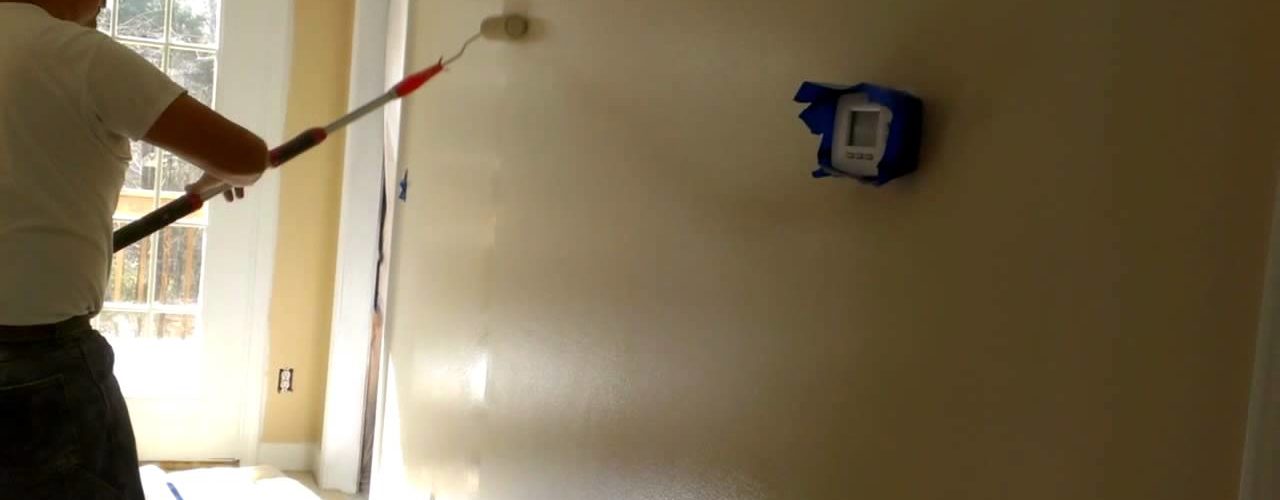Whether you are trying to freshen up the look of your room or you are creating a background for your remodeling project, painting the interior walls of your home can set the atmosphere within the room. For this reason you want to complete this to the best of your ability because poor painting can ruin your desired outcome.
Contents
Gathering Your Tools And Materials
The first thing that you will want to do when you are planning on painting your walls is to gather the necessary tools and supplies to complete this project correctly. You will need paint brushes, paint roller, a paint pan, and extension handle if you have walls taller than you can reach comfortably, a ladder, a paint primer, your desired paint in your chosen finish and color, painter’s tape, a bucket of water, clean cloths or rags, sheets or old drop cloths to cover any furniture or flooring in your room, a screwdriver to open your paint cans(if necessary) and a wooden stir stick for your paint.
If you are experienced at using a spray gun and you have a larger room to paint, you can use this instead of the paint roller.
Prepping The Room For Painting
Prior to painting your interior walls you will need to take certain precautions to protect the items in your room. You will also want to protect the trim work, baseboards, ceilings, ceiling fans and lighting fixtures as well as your flooring from paint spills, splatters and speckling. This will also help to keep the finished appearance of your room neat and clean.
Step 1. Move any furniture or items to the middle of your room and away from any wall surfaces you will be painting.
Step 2. Cover these items with your sheets or drop cloths. You can use tarps or newspaper to cover them if needed.
Step 3. Cover the entire floor with the sheets, drop cloths, newspaper or tarps to protect from spills.
Step 4. Use your painters tape to mask around windows, doorways, trim work, baseboards, lighting fixtures, wall plates, the ceiling and any other fixtures that you do not wish to get paint on. This includes wall unit air conditioners and wall paneling.
Step 5. Remove any window coverings that you may have hanging in the room.
Painting Interior Walls
Before you can paint your walls with your color paint, you will need to apply a primer coat to your walls. This will help to prevent any stains bleeding through your fresh paint. Once the primer paint is dry you can use the same method to apply your color paint. You can skip the primer paint if you get a paint that provides both a primer and color paint coverage and protection for your walls.
Step 1. Use your screw driver to pry open the can of paint.
Step 2. Use your wooden stir stick to thoroughly stir the paint in the can.
Step 3. Pour a generous amount of paint into your paint pan. Be careful not to pour too much as this will prevent you from being able to accurately remove excess paint on your roller or brush. If you are using a spray gun, fill the jug with your paint and reattach the sprayer to the jug.
Step 4. Dip your paint roller into the paint and roll the excess paint off on the rigid area of the paint pan.
Step 5. Working in an up and down motion, begin applying the paint to your wall. You will want to start at the highest point of the wall working downward. This will help to eliminate drips and runs from forming on your wall. If you do notices drips or runs, use a paint brush to wipe them off leaving a flush surface.
Step 6. Use caution when painting at the top of your wall area as you can easily get paint on your ceiling if you take the roller up too high.
Step 7. Finish painting all of your interior walls in the above fashion. You can use the water in the bucket and the clean cloths to help wipe away any errors as they first happen such as paint drips and accidental paint applications on framing work or doors.
Tips For Painting Tight Areas
When you need to paint hard to reach areas that your paint roller does not cover very well such as corners, around doorways and windows and around other areas that may be hard to paint around with a roller, you can apply a coat of paint with a paint brush. This should be done prior to applying paint with the paint roller if possible. Make sure that you dip your paint brush in the paint and remove all excess paint from the brush prior to touching your walls. This will help to eliminate runs and drips that often occur.
Cleaning Up
When you have completed the project of painting your desired interior walls you can pour any excess paint still left in the paint pan back into the paint can. Use your brush to help push the pain back into the can. Replace the lid on the paint cans and make sure that they seal tightly. Wash out your brushes, rollers and paint pan out with warm water and a mild detergent.
You can now remove the coverings that you have on your floors and over your furniture. You can also remove any painters tape from the walls, ceiling, trim work, baseboards and anywhere else you may have had to use it after you are confident that the paint will not run onto these areas.
Other Resources: HowStuffWorks.com
<>



